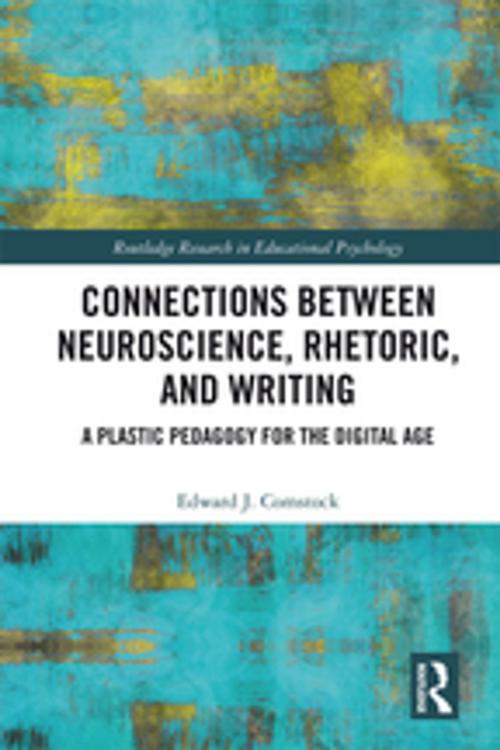Connections Between Neuroscience, Rhetoric, and Writing
A Plastic Pedagogy for the Digital Age
Nonfiction, Reference & Language, Education & Teaching| Author: | Edward J. Comstock | ISBN: | 9781351813839 |
| Publisher: | Taylor and Francis | Publication: | April 17, 2018 |
| Imprint: | Routledge | Language: | English |
| Author: | Edward J. Comstock |
| ISBN: | 9781351813839 |
| Publisher: | Taylor and Francis |
| Publication: | April 17, 2018 |
| Imprint: | Routledge |
| Language: | English |
This book argues that contemporary neuroscience compliments, extends, and challenges recent and influential posthuman and new materialist accounts of the relations between rhetoric, affect, and writing pedagogy. Drawing on cutting-edge neuro-philosophy, Comstock re-thinks both historical and current relations between writing and power around questions of affect, attention, and plasticity. In considering the uses and limits of exciting new findings from the neurobiology, this volume both theorizes and offers pedagogical strategies for teaching writing in a digital age characterized by the erosion of wonder and pervasive disaffection. Ultimately, in response to recent critiques transcendental reason and subjectivity, and related calls for the increased inclusion of multi-modal and digital writing and rhetoric, Comstock argues for an embodied pedagogy that values the substantial relations between writing and pedagogical care.
This book argues that contemporary neuroscience compliments, extends, and challenges recent and influential posthuman and new materialist accounts of the relations between rhetoric, affect, and writing pedagogy. Drawing on cutting-edge neuro-philosophy, Comstock re-thinks both historical and current relations between writing and power around questions of affect, attention, and plasticity. In considering the uses and limits of exciting new findings from the neurobiology, this volume both theorizes and offers pedagogical strategies for teaching writing in a digital age characterized by the erosion of wonder and pervasive disaffection. Ultimately, in response to recent critiques transcendental reason and subjectivity, and related calls for the increased inclusion of multi-modal and digital writing and rhetoric, Comstock argues for an embodied pedagogy that values the substantial relations between writing and pedagogical care.















